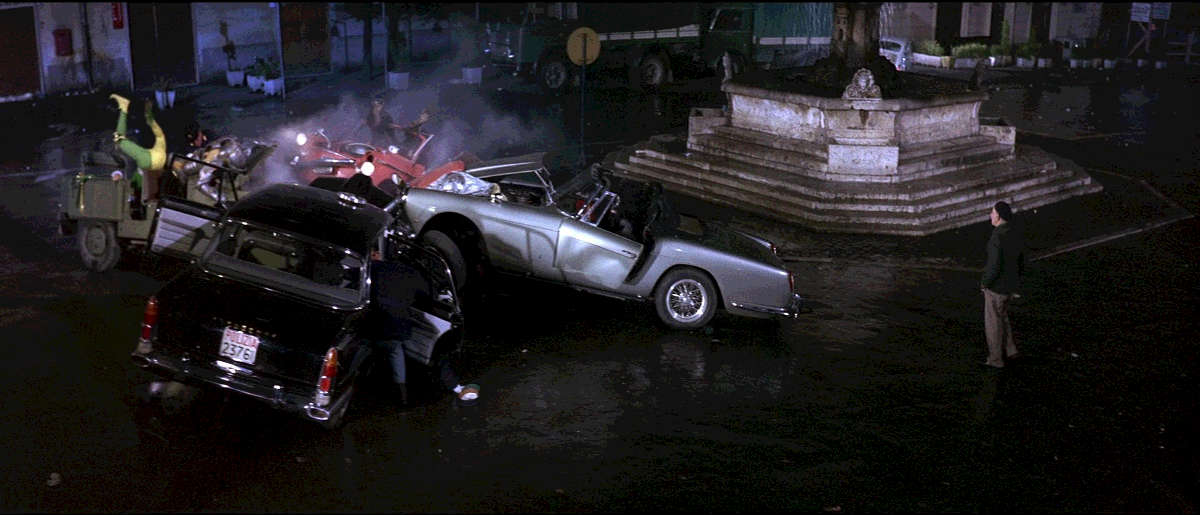Intersection collision
Intersections have already proven to be one of the most dangerous places for motorists, cyclists, and pedestrians alike. The National Highway Traffic Safety Administration (NHTSA) estimates that as many as 40 percent of all car accidents take place in intersections.
Las Vegas is famous for having some of the largest intersections and busiest roadways in Nevada. The number of turning lanes and the volume of traffic increase the risk of accidents in intersections.
An additional factor is the number of visitors to the area who are unfamiliar with the routes they are traveling and may be distracted by their first sights of the Las Vegas Strip.
Motorists, bicyclists, and pedestrians experience an increased risk of injury or death when drivers do not follow traffic laws, such as when they fail-to-yield right-of-way.
Although traffic signals and regulations have been instrumental in reducing the number of intersection collisions, these types of accidents are still far too common.
Traffic intersections, and the laws that go with them, are necessary for the smooth functioning of our nation’s roads. Without this organization, getting from point A to point B would mean taking your life into your hands. Though controlled by traffic lights or signs, intersections can prove dangerous in the presence of negligence.
Not obeying to traffic laws is a form of negligence and negligent drivers may be held liable for the accidents they cause.
Fortunately, victims who sustain losses from a car accident at an intersection may have legal recourse. If you were involved in car accident, you should speak with an experienced Las Vegas car accident lawyer about your case.

Common causes of intersection accidents
A collision in an intersection can have a number of different causes like all car accidents.
However, these types of accidents are unique because they almost always involve the negligence of at least one driver.
Some of the most common causes of intersection accidents include:
- Traveling at unsafe speeds, which includes briefly speeding up to beat a red light;
- Falling asleep at the wheel;
- Driving while intoxicated, which can severely inhibit a person’s decision making ability, reduce reaction times, and impair motor functioning;
- Distracted driving, which can include using cell phones, adjusting in-vehicle technologies, or not paying attention to the road;
- Vehicle defects, such as defective brakes or faulty tires, which can prevent a motorist from being able to stop in time to avoid a collision with another driver, cyclist, or pedestrian; and
- Poor intersection design, which limits a motorist’s visibility or results in poorly designated lane markers.
Almost all of these factors can cause a driver to violate the state’s traffic laws, which require all drivers to stop at red lights.
Remember, drivers are only permitted to turn right on a red light after coming to a full stop, unless traffic signs indicate otherwise. Even in these cases, drivers must yield to pedestrians and all other moving traffic before making a turn.
Failing to do so can have devastating consequences, especially for cyclists and pedestrians who without bumpers and crumple zones are relatively unprotected from impact.
Side-impact accidents
Side-impact crashes (they may also be called broadside impacts or t-bone impacts) are some of the most deadly accidents that regularly occur in intersections.
Typically, these types of accidents are the result of distracted driving or driving under the influence. For this reason, the collisions tend to occur at extremely high speeds, resulting in devastating injuries.
These accidents are usually particularly severe because the sides of a vehicle do not offer as much protection to drivers and pedestrians as the front and rear parts of a vehicle. As a result, a car’s occupants are much more likely to suffer from the following injuries:
- fractured ribs and pelvis;
- hearing loss;
- broken femurs;
- sternum and diaphragm injuries; and
- dislocated or broken shoulders.
Rear End Collisions
After side-impact collisions, rear-end collisions are among the most common types of intersection-related car crash.
These types of collisions are often caused by a driver’s distraction or inattention, like most accidents that occur in an intersection. Although rear end accidents do not tend to occur at as high a rate of speed as side-impact crashes, they can still lead to painful injuries, including:
- dislocated and broken knees from impact against the vehicle’s dashboard;
- head trauma; and
- and severe whiplash.
In many cases, these injuries are compounded by additional impacts from other vehicles.
Pedestrian Accidents
Although accidents between vehicles commonly occur at intersections, they are by no means the only kinds of accidents that take place there. For example, pedestrians and cyclists using crosswalks are also at risk of sustaining serious injuries, especially if a driver is distracted.
Because they do not have the protections offered by seat belts, air bags, and thousands of pounds of steel between them and the road, collisions between pedestrians and motorists tend to result in particularly devastating injuries.
Many injured cyclists and pedestrians suffer from injuries including:
- broken bones;
- organ damage;
- traumatic brain injuries;
- spinal cord injuries; and
- severe road rash.
Motorcycle Accidents
According to the National Highway Traffic Safety Administration (NHTSA), most motorcycle accidents that occur on urban roadways take place at intersections and involve either:
- A motorist, who does not see a motorcyclist approaching through the intersection, attempting to make a left hand; or
- A motorist sideswiping a motorcyclist when both parties are attempting to make a left hand turn.
In almost all situations, intersection collisions between motorists and motorcycle riders occur because one of the parties failed to yield correctly or the driver failed to check his or her blind spot.
Furthermore, because intersections are so highly traveled, they are more likely to suffer from road defects, such as potholes, loose asphalt, and standing water. While these types of problems are an annoyance for motorists, they can prove deadly for motorcyclists and cyclists.